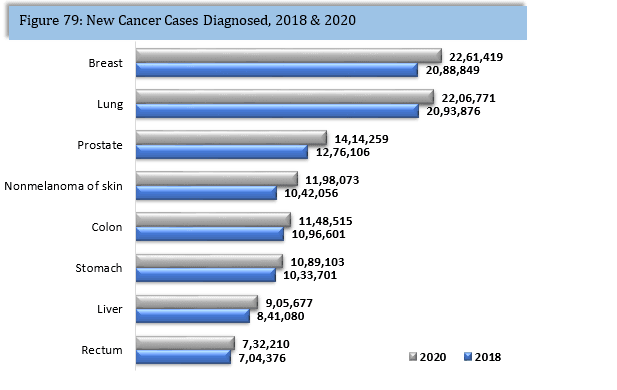- Home
- About Us
- Industry
- Services
- Reading
- Contact Us
Implantable pumps Market Seen Soaring 5.7% Growth to Reach USD 25.6 Billion by 2030, Projects UnivDatos Market Insights
Author: Himanshu Patni
December 15, 2023
According to a new report by Univdatos Market Insights, the Implantable pumps Market, is expected to reach USD 25.6 Billion in 2030 by growing at a CAGR of 5.7%. Implantable pumps are medical devices designed to deliver a controlled amount of medication or fluids directly into the body. These pumps are typically implanted under the skin and are used for various therapeutic purposes, such as pain management, chemotherapy, and insulin delivery for diabetes. Based on the product type, the market has been categorized into patient-controlled analgesia (pca) pump, enteral pump, insulin pump, elastomeric pump, and syringe pump. Based on the application, the market has been categorized into oncology, pediatrics/neonatology, gastroenterology, hematology, and diabetes. Based on the end-user, the market has been categorized into hospitals and clinics, ambulatory surgical centres, home healthcare. The North America implantable pumps market is expected to continue to grow in the coming years.
Access sample report (including graphs, charts, and figures) – https://univdatos.com/get-a-free-sample-form-php/?product_id=50945
The report suggests that the Rising Prevalence of Chronic Disease and Increasing Aging Population are one of the major factors driving the growth of the implantable pumps market during the forthcoming years. The global medical implantable pumps market has witnessed substantial growth, driven in large part by the rising prevalence of chronic diseases and an increasing aging population. This phenomenon is particularly evident in developed regions like North America, where the confluence of these demographic and health trends has created a conducive environment for the expansion of the medical implantable pumps market.
Rising Prevalence of Chronic Diseases:
Chronic diseases, characterized by long-term health implications and the need for continuous medical intervention, have become increasingly prevalent globally. In North America, conditions such as chronic pain, diabetes, and cardiovascular diseases have seen a surge in incidence. The burden of these chronic ailments has necessitated the development and adoption of advanced medical technologies, including implantable pumps.
a. Increasing Demand for Pain Management:
Chronic pain, often associated with conditions like arthritis and back problems, has become a pervasive health issue. Implantable pumps offer an effective solution for pain management by delivering controlled doses of medication directly to the affected area. This targeted approach not only enhances pain relief but also minimizes side effects compared to systemic drug delivery methods.
b. Diabetes Management with Implantable Pumps:
The escalating prevalence of diabetes, particularly in older age groups, has fueled the demand for implantable pumps for insulin delivery. These devices provide a more precise and automated approach to insulin administration, improving patient adherence to treatment plans and overall diabetes management.
Fig1: New Cancer Cases Diagnosed, 2018 & 2020

Increasing Aging Population:
Demographic shifts, characterized by a rapidly aging population, contribute significantly to the growth of the medical implantable pumps market. The aging demographic in North America brings with it an elevated risk of chronic diseases and age-related health conditions, creating a substantial market for implantable pump devices.
a. Complex Healthcare Needs of the Elderly:
Elderly individuals often experience a higher incidence of chronic health conditions that require continuous monitoring and management. Implantable pumps address the specific healthcare needs of the aging population by offering targeted and sustained drug delivery, which is crucial for conditions like chronic pain, spasticity, and certain types of cancers.
b. Long-Term Care and Implantable Pumps:
The preference for long-term care among the elderly has increased the demand for implantable pumps. These devices provide a reliable and efficient means of delivering medications over an extended period, supporting the growing need for personalized and patient-centric healthcare solutions.
Technological Advancements:
The intersection of the rising prevalence of chronic diseases and the increasing aging population is met with continuous technological advancements in the medical field. Implantable pumps have evolved to become more sophisticated, offering enhanced functionalities and improved patient outcomes.
a. Smart Implantable Pumps:
Recent developments in implantable pump technology include the integration of smart features. Smart pumps can be remotely monitored and programmed, providing healthcare professionals with real-time data and patients with greater control over their treatment. This connectivity contributes to more personalized and responsive healthcare, particularly beneficial for the aging population requiring long-term management.
b. Miniaturization and Improved Biocompatibility:
Advancements in miniaturization and improved biocompatibility have led to the development of smaller and more implant-friendly devices. This has not only enhanced patient comfort but also expanded the potential applications of implantable pumps across a broader spectrum of chronic conditions.
For a detailed analysis of the Global Implantable Pumps Marketbrowse through – https://univdatos.com/report/implantable-pumps-market/
Conclusion
In conclusion, the growth of the medical implantable pumps market in North America is intricately linked to the rising prevalence of chronic diseases and the increasing aging population. The demand for effective and targeted solutions for managing chronic conditions, coupled with the unique healthcare needs of the aging demographic, has created fertile ground for the expansion of this market. Moreover, continuous technological advancements, such as the development of smart pumps and improvements in device design, further contribute to the market’s momentum. As the healthcare landscape continues to evolve, the role of implantable pumps in providing personalized and long-term therapeutic solutions is poised to become increasingly significant.
Get a Callback
